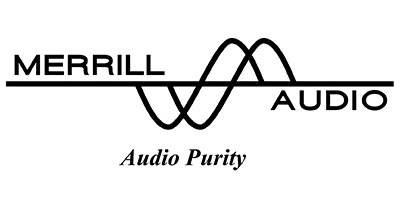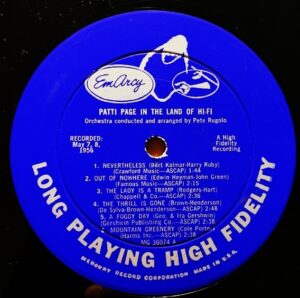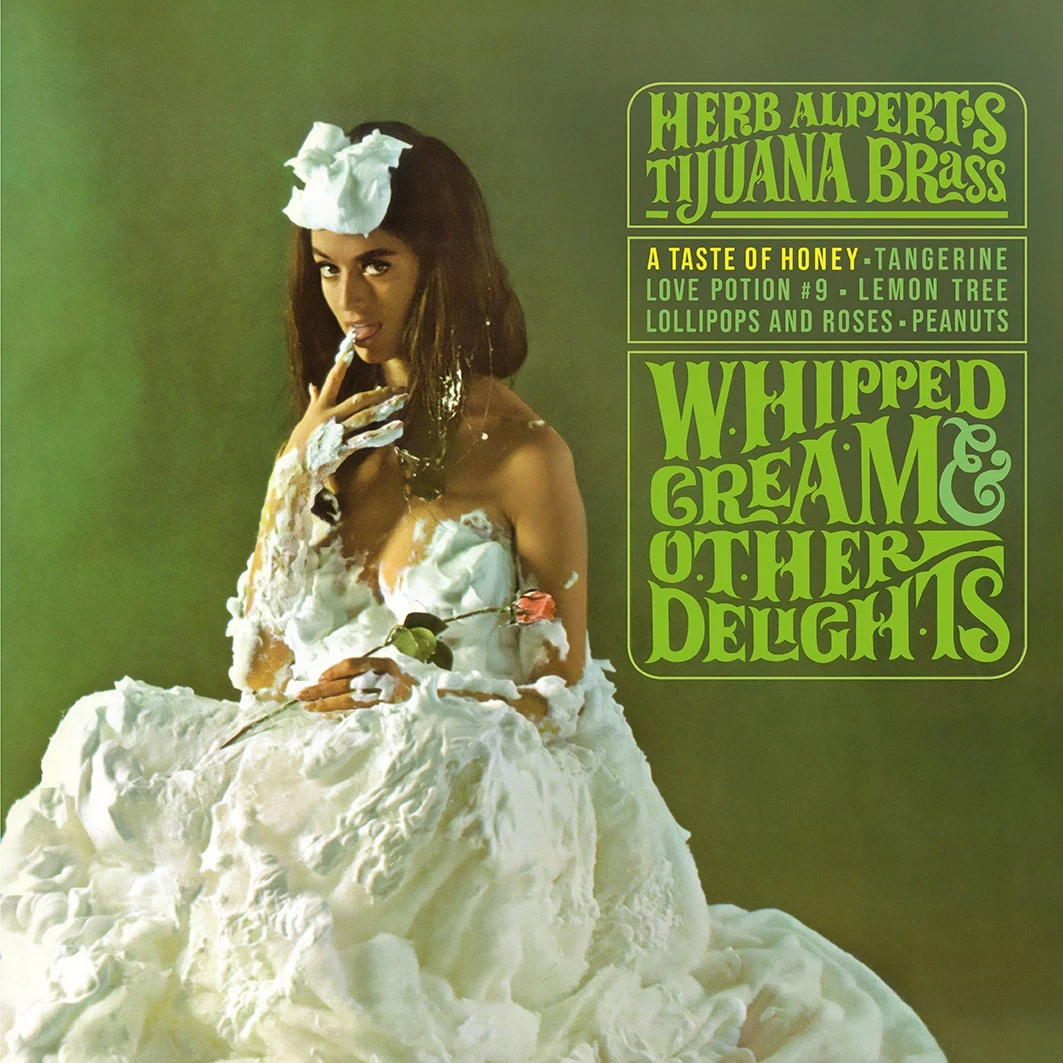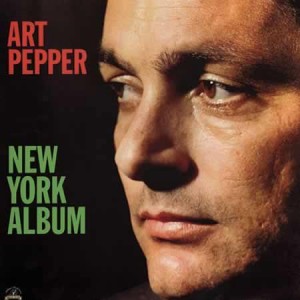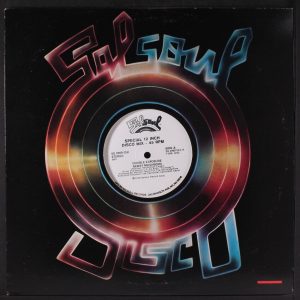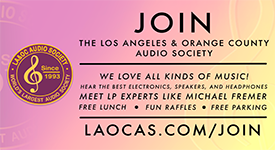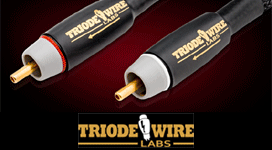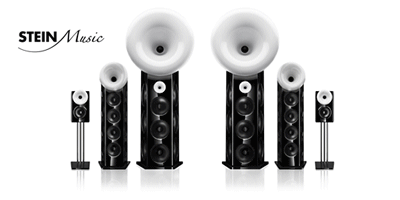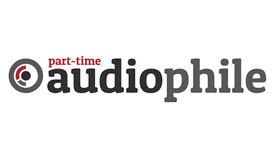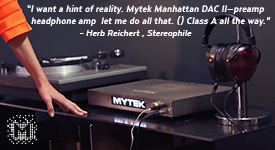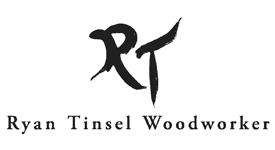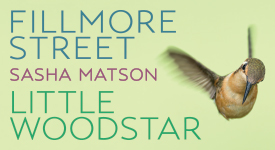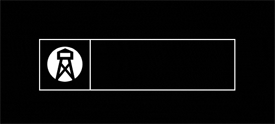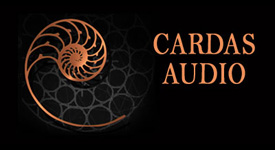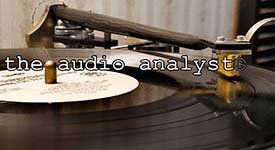What has intrigued me about this record for decades is its cover photo. I can't remember when I first saw it, but it was long ago. I think I saw it on an inner sleeve, or maybe it was in one of those colorful catalogs that record companies used to stuff inside of their LPs. Wherever it was, the image of a lady surrounded by a bevy of Neumann U47 and RCA 44B microphones has been haunting me for years.
And then one day, about four years ago, I bumped into a copy. It was either in a thrift shop or at a garage sale, but there it was. I wasn't actively looking for Patti Page's In the Land of Hi-Fi (EmArcy 36074), but when I saw it, I impulsively bought it. I didn't care if the record stank. It was meant to be mine. Regarding Patti Page, I can't say that I love her singing, but I like her singing. To my ears, she was a good pop singer, and her Mercury LPs, at least the ones that I've stumbled upon, sound very good.
Buying records for the cool looking jackets is a part of record collecting. Perhaps it's true that you can't judge a book by looking at the cover, but you can often judge a record by looking at the cover. And by reading, if listed, who the musicians are. Great looking record jackets have put me in touch with music that I never would have heard. It was the Rococo painting Campagna by Johann Heinrich Schmidt on an LP by I Musici (Phillips Festivo 6570 181) that introduced me to what is still my reference recording of Benjamin Britten's "Simple Symphony." And it was the sexy James Bond-inspired photo on Come Spy With Me (RCA LSP-3540) that turned me into a Hugo Montenegro fan. As I implied, I love to look at microphones, especially the models from the forties and fifties. The image of the lovely Patti Page surrounded by four RCA 44Bs and two Neumann U47s is my idea of a cool looking record. The 1966 red Mustang Fastback on Kai Winding's hopelessly bland Modern Country (Verve V6 8602) also looks cool, but Patti surrounded by the two greatest vocal microphones ever created looks much cooler. What doesn't look cool to me is The Beatles covered with raw meat and decapitated dolls on the infamous original issue of Yesterday and Today.
So who was Patti Page (1927-2013)? Her real name was Clara Ann Fowler, and her hit-making era was before I was born. She had great success in the early fifties with family-friendly songs, like "How Much Is That Doggie in The Window" and "The Tennessee Waltz." After Frankie Laine departed for Columbia, she became Mercury Records' biggest star. She made a lot of albums for Mercury, and a later for Columbia. With her smooth alto voice, she was also one of the pioneers of overdubbing her voice on top of her voice. In the early fifties, Page's multi-voiced records coincided with similar sounding records by Les Paul and Mary Ford.
In 1956, Page took a short break from her brand of smooth-going pop for something a little edgier, or, to be more specific, jazzier. The result was her album Patty Page in the Land Of Hifi, one of her two albums that Mercury issued on their mono-era jazz label EmArcy. My record collecting friends associate jazz artists like Clifford Brown, Max Roach, and Sarah Vaughan with EmArcy, and they would never connect EmArcy with Page. And yet, here she was, recording with a big band which included the likes of Bud Shank, Pete Candoli, Howard Roberts, Frank Rosolino, John Grass, Vincent de Rosa, Ted Nash, and Bob Cooper. In other words, she made this record with some of the best West Coast studio musicians and jazz players. And let's not forget the percussionists, which include drummer Alvin Stoller and my favorite bongo player, Jack Costanzo.
The album was recorded on May 6th and 7th, 1956, and this is the only album where I've seen the recording dates printed on the label. According to Marc Myers at jazzwax.com, the album was probably recorded at the newly built Capitol Records Tower. If so, since it was also recorded in stereo, it would make it the earliest stereo recording made in Capitol's famous ground floor studios, although Nat King Cole's Love Is the Thing is historically credited as the first stereo recording from the Capitol tower, made in December 1956. Hmm.
So what's inside Patti Page's In the Land of Hi-Fi? Keep reading and you'll find out.
Side one cut three is a smoking hot performance of "The Lady is a Tramp." If you're accustomed to Frank Sinatra and Ella Fitzgerald singing this song, make room for Patti. Her band is on fire, and she's completely inline with their thinking. The cut opens with two of the best sounding french horns ever recorded, courtesy of John Grass and Vincent de Rosa. The opening sounds relaxed, but very quickly the band explodes, and when this happens you can actually feel the deep bass of the percussion. I became a fan of Pete Rugolo's wind arrangements when I was remastering June Christy's Something Cool for Cisco Music, so I feel quite at home with his rich, reedy, sound. However, where June's album is constantly cool, this band can play just as hot as they can play cool. And if you're wondering if the doggie-in-the-window lady could sing cool jazz, the answer is she can!
Cut four is "The Thrill is Gone." Nope, it's not the song that B.B. King sang. It's the song that Chet Baker, Chris Connor, and Sarah Vaughan sang. Rugolo's arrangement sounds exactly like something from Something Cool, as it's very cool. This is also the best sound on the album, and I love the woodwinds. The interplay between Bud Shank's flute and Bob Cooper's oboe is, for me, comforting, as I'm a big fan of their duo work from their records on Pacific Jazz and Contemporary. As for Patti, she sounds like one very cool lady. The words "who knew" aptly applies to her chops as a jazz vocalist.
Cut five is the George and Ira Gershwin classic "A Foggy Day." The big difference between Patti's version and the familiar one by Sinatra is Rugolo's wind arrangement. Another big difference is Bernie Mattinson's vibes. His vibes add a breezy or perhaps minty sound to the music that is as unique as it is refreshing. Page isn't forging a new path on this cut, but her band is!
Side two cut three is "I Didn't Know About You." I didn't know about this song, so I Googled it. The music is by Duke Ellington and the lyrics are by Bob Russell. Once again, I get to hear those great sounding vibes from a vibeist whom I need to know more about. This cut is mellow, so it provides a nice break from Rugolo's screaming brass machine.
The album closes with a great performance of "Love For Sale." There are so many good versions of this classic, and this is one of them. I was wondering when I'd get to hear Jack Costanzo's bongos. Well, on this cut Jack's playing congas instead. There's a Latin American-Stan Kenton vibe on this cut, and it works. Patti's vocals are simply sublime.
The sound of this record is what I'd call an excellent example of mid-fifties HiFi. The winds are palpable and the bass from the percussion is gargantuan. It's not exaggerated bass, but, unlike a lot of records from this era, it's quite deep, and it's rock-solid. I could do with a little less reverb on Patti's voice, but, on "The Thrill Is Gone," her reverb is reduced to very little. One thing that I found interesting is that if you play this album at the right volume for the winds and percussion, Patti sounds a little too loud. This isn't annoying, but, if you like your jazz vocals played at more of a "cocktail level," you will miss the powerful impact of the bottom end. This might also be a function of my solid state Sherwood receiver that I use in my office. I have no doubt that my all-tube system, with its EAR and Audio Research components, would play the album's dynamics a little differently. This album really shows off the Hana EH cartridge's exceptional bottom end.
A word of caution: As mentioned above, this album was also recorded in stereo (Mercury SR 8000). The stereo LP sounds dreadful, and I really wonder why. I suspect that Capitol was using the same model Ampex 350 three-channel recorder that was used to record Felix Slatkin, Carmen Dragon, and Leonard Pennario, but their records sound great. Maybe the stereo recording was a quickie mix and recorded directly to a two-channel machine. As the mono record sounds great, I kind-of regret ordering the fact that I bought the stereo version for the sake of this review.


